
The best and worst weather for cycling. Examples from 2021 Vuelta a España
August will mark the start of one of the three main cycling events worldwide: La Vuelta a España. This year, it will kick off at Burgos Cathedral on 14 August and end at Santiago de Compostela's Cathedral on 5 September — a diversion from the usual Paseo de Madrid.
For us, at Windy.app, this is a great opportunity to discuss the impact of the weather on cycling. In this post, we will also share with you how to use the weather to your advantage in your cycling sessions and some extra tips so nothing can stop you from pedaling.
You will also be able to see the weather forecasts for the 2021 Vuelta a España and the challenges that the weather brings for the participants.
How does the weather affect cyclists, and why are we talking about the Vuelta a España?
All weather conditions affect the athlete's performance — cycling included. In addition to having a direct influence on the physical conditions of the athlete, it also affects the terrain's conditions, and thus, their performance.
The Vuelta a España 2020 (as well as the Giro d'Italia in May) set a milestone in the history of this famous competition, as it took place in October instead of summer, as usual, for reasons associated with the pandemic. This change took a toll on the cyclists' performance due to the various weather phenomena that take place in autumn.
Therefore, it becomes apparent that the weather and weather conditions have a direct effect on the performance of the race. For example:
- Side winds can create a fanning effect, cutting up the peloton and causing riders to lose valuable time.
- Rains may cause "big" crashes where those involved can end up injured or even end up leaving the race. Other precipitation and meteorological phenomena such as snow and fog can also sometimes cause the partial or total suspension of a stage.
- High temperatures may cause heat dehydration, while low temperatures call for heavier clothing that slows you down.
All these factors affect the riders, who have but their legs to rely on, along with great determination and a strong psyche, to win the day's stage and arrive at the end of the race in the best possible position.
This was the short version of this article. We will now discuss each of these weather factors in more detail. Besides, there are others:
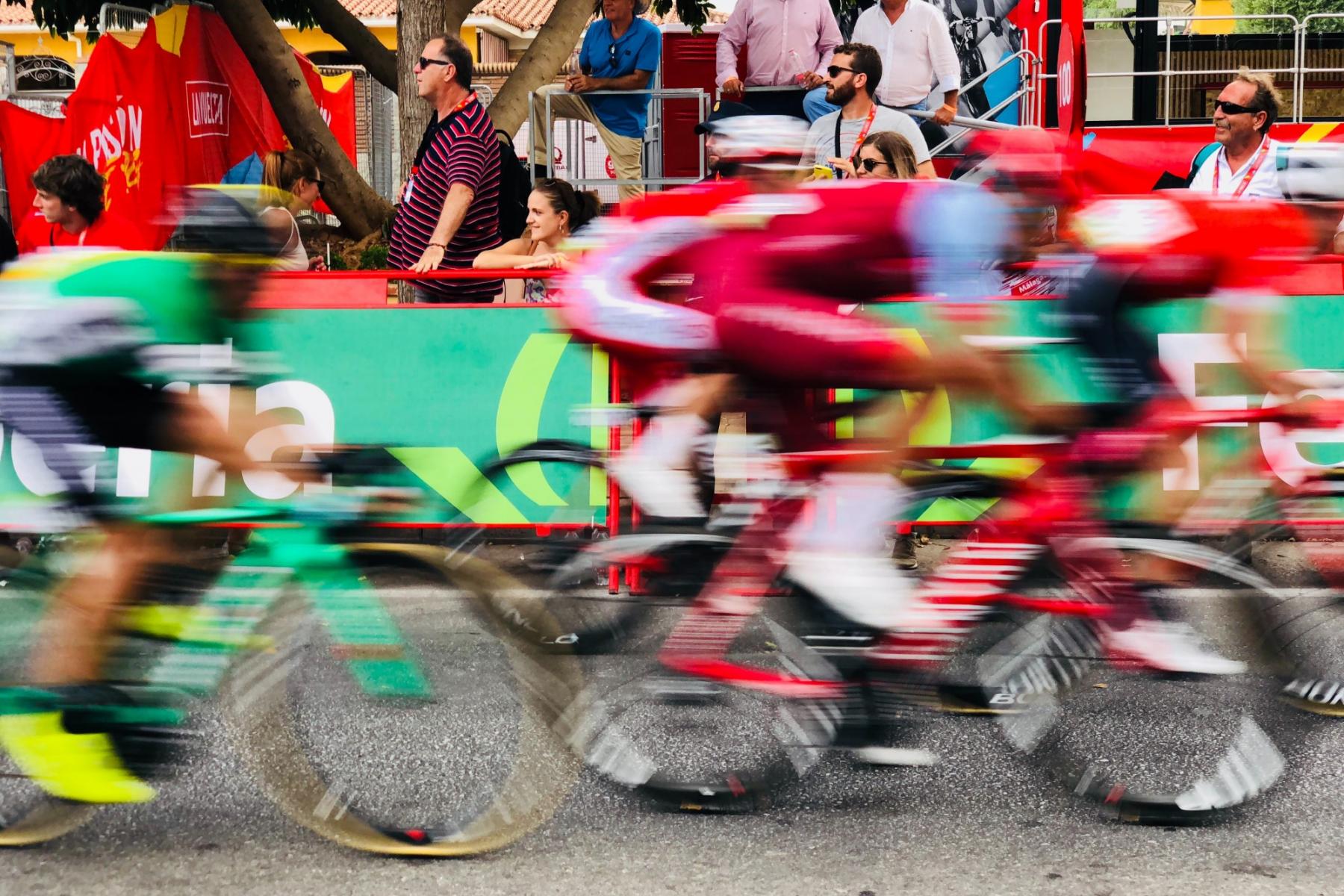
John-cameron / Unsplash
Wind
The wind is the atmospheric condition produced by the variation of pressure present in the environment, i.e. the flow of air in any one direction. It has three main parameters: speed, direction, and gusts.
- Wind speed is the distance traveled at any given time.
- Wind gusts are quick and sudden wind movements.
- Wind direction refers to where it comes from and where it's headed, but also where it is — then we can talk about the opposite direction.
Why does this affect cyclists?
One of the key factors in cycling that can make it a high-risk sport is wind direction.
- Head winds create resistance and therefore negatively affect performance. To counteract them, cyclists should take a special position, bringing their hands close to the center of the handlebar, arms at a 90° angle to reduce back elevation, with their knees facing inwards. When practicing in teams, it is advised to change positions to reduce fatigue across all team members and for more experienced riders to lead.
- Side winds pose the greatest threat and difficulty for the rider. Although they are not hard winds, they require great arm and back strength. To counteract this effect, a similar posture to headwind is required, with hands further apart on the handlebars.
Precipitation
Precipitation is atmospheric moisture falling on the ground in the form of rain, snow, or hail.
For example, the Vuelta a España 2019 was the stage for one of the most memorable rain-related incidents during its ninth stage, finishing in Cortals d'Encamp. Here, it was impossible to film the fall of Miguel Angel Lopez, as well as the unexpected victory of Primoz Roglic, due to the torrential rains that fell dangerously during the stretches of dirt turned to mud and stone.
Another clear example of this happened in the 2019 Tour de France, due to a storm that made it impossible for cyclists to continue due to the amount of rain and hail in Val d'Isere.
Why does this affect cyclists?
Precipitation doesn't have to stop you from cycling—it can be an interesting challenge. If you are also caught in the rain on the route, here are some tips for you:
- Firstly, you should slow down, as it is harder for the tire to grip the ground. Well-inflated tires can be a game-changer in muddy terrain, as you will get a better grip from having tires with more volume.
- Do not dismiss hydration — our body may make us think that we don't need to hydrate on rainy days, but don't fall for this: hydration is just as necessary as on any sunny day since your body temperature rises during exercise.
- Again, proper clothing is essential. Grabbing clothes with water-repellent properties will be your best bet to avoid being soaked to the bone during a downpour.
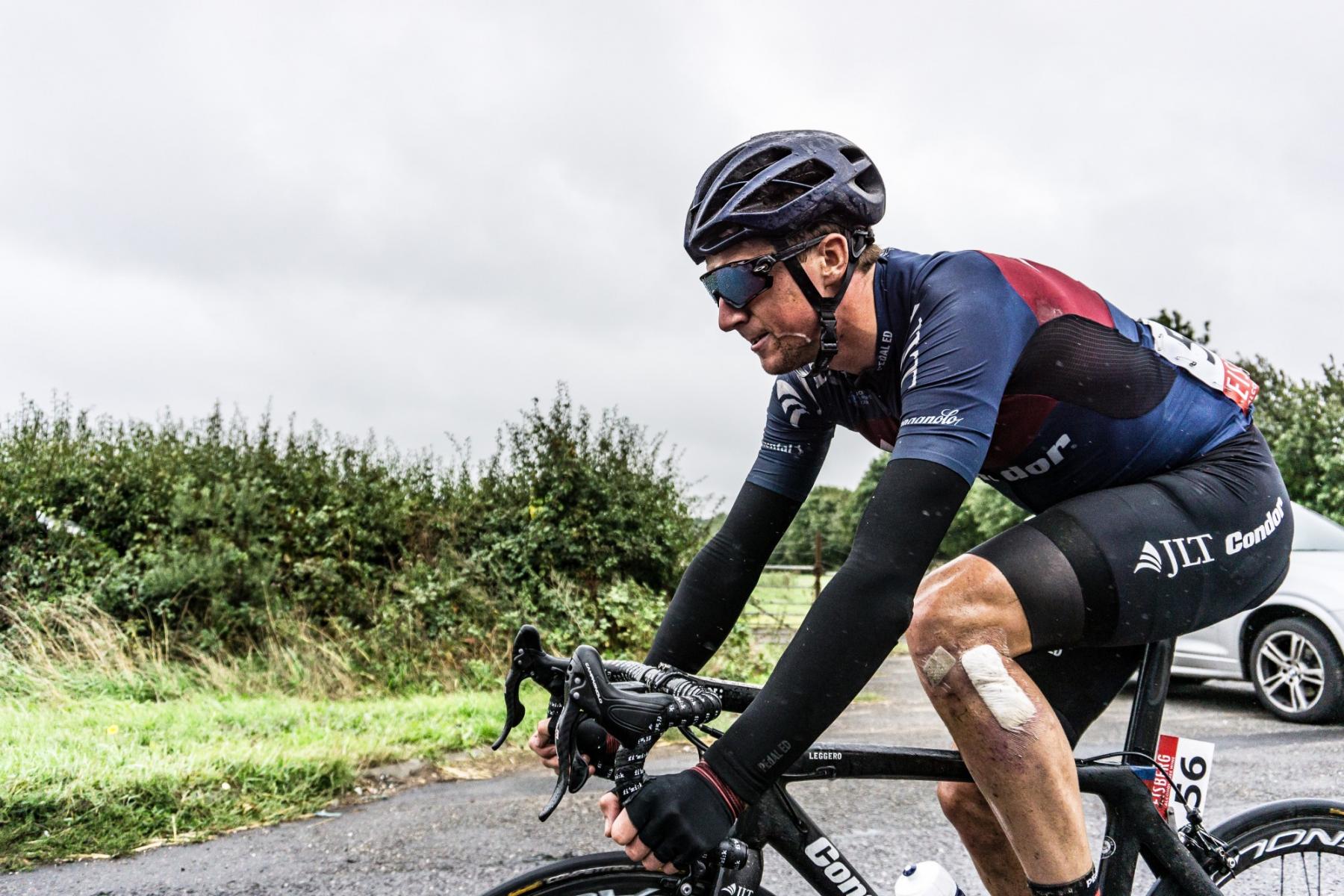
Greg-trowman / Unsplash
Temperature
Temperature is the amount of heat present in any given medium or living thing at any specific time.
The influence of humidity or wind on temperature is called wind chill, i.e. the perception that we feel hot or cold regardless of the actual temperature, measured in the same way (degree Celsius).
There is also a heat index correlating the air's dry temperature and the relative humidity, and specifically determines the body's thermal sensation of heat.
On the cold end of the spectrum, wind chill is a determining factor, and therefore, so is wind speed. Obviously, the higher the wind speed, the colder we feel, so it is an important factor when planning an outing.
For example, at a real temperature of 10 °C, wind chill can range from 8 °C at a wind speed of 10 km/h, to -1 °C with the wind blowing at 40 km/h.
Why does this affect cyclists?
Outside temperature directly affects the body's temperature or perceived temperature, which should not exceed 37 °C, and is thus key to cycling.
When cycling in very warm regions, it is important to consider these recommendations to avoid heatstroke.
- The ideal cycling temperature should be around 10 °C, so hydration can happen every 30 minutes or so. For higher temperatures, we recommended hydrating every 15 minutes.
- If possible, try getting your body wet as well as drinking water.
- Clothing plays an important role in managing body temperature, especially clothing that evaporates sweat.
Training in warm settings may help lower the impact of actual practice in regions with very high temperatures.

Daniel-llorente / Unsplash
What is the weather like for 2021 Vuelta a España?
If there is one place where you can find all the weather conditions that put cyclists to the test, it is races — and Vuelta a España is no exception.
With three weeks and 21 stages divided into seven mountain stages, four medium mountain stages, six flat stages, two flat stages with a summit finish, two individual time trials, and two rest days,
Vuelta 2021 offers stages for all to enjoy. For mountain stage fans, the race will have 45 mountain passes, 3 of the special category, 13 of the first, 13 of the second, and 16 of the third category. There are also flat stages, ideal for sprinters to get a leg up. Eleven of the stage starts in this edition of the Vuelta are brand new with 3,336.1 km in total — an average of 158 kilometers on the road per day, and 23 participating teams.
The average temperatures and other weather factors discussed below are based on the climate history of past editions over the last few years, always on similar dates.
The first week of the Vuelta: Wind will be the biggest challenge
The first week will be mainly flat stages (five in total), two mountain stages, and an individual time trial to start.
La Vuelta 2021, on 14 August in the city of Burgos, with a forecast of 26°C. Temperatures this week could range from 20°C to 33°C and will have two challenges linked to historically strong winds:
- First, stage 5 between Tarancón and Albacete, on 18 August, sunny with a chance of strong gusts, since the area is very open, so the riders will have to be very careful not to shift too much in the general classification. Along this route, you will enjoy the beautiful scenery of the Mediterranean coast.
- The second challenge comes on stage 8 between Santa Pola and La Manga del Mar Menor in the Valencian Community, where, historically, winds blow from the sea towards the coastline this time of the year, resulting in a lateral wind affecting the teams, who have to choose central positions to protect themselves from the strong gusts. This is known in professional cycling as a fan move, a strategic formation riders take to protect their leaders from other teams.
If you want to know for sure what kind of wind you will face, take a look at the weather map on the Windy.app when planning your cycling trip.
Day 21, another flat stage, this time in a naturally windy region, although in summer this tends to subside. Competitors must keep a close eye on the general classification, as this is a control stage for those fighting the top positions.
This first weekend with the stage 9 route between Puerto Lumbreras and Alto de Velefique, with the first rest day on 23 August.

Rob-wingate / Unsplash
The second week of the Vuelta: high temperatures — pros and cons
The second week will be marked by medium and high mountain routes, and soaring temperatures will be an all-important factor in these stages:
- Stage 12, Jaén to Córdoba in Andalucia
- Stage 13, Belmez, Andalucia, to Villanueva de la Serena, Extremadura
- Stage 14, Don Benito, Extremadura, to Las Villuercas, Cáceres
- Stage 15, Navalmoral de la Mata to El Barraco in Castile and León
After this hard day, we reach the second and last rest day.
Third and final week of the Vuelta: abrupt weather changes will be a defining factor
Going into the third and final week, temperatures will drop slightly, with a forecast between 22°C and 25 °C.
This week will be key for those aspiring for the top positions of the race. The high mountains come in full splendor with stage 17 — the crowning glory of Vuelta 2021, finishing in Lagos de Covadonga with a route of 181.6 km and a 14% gradient.
- This stage was run for the first time in 1983 and throughout its history, it has seen eight Spaniards as the main winners: Marino Lejarreta (1983), Pedro Delgado (1985 and 1992), Álvaro Pino (1989), Juan Miguel Mercado (2001), Eladio Jiménez (2005), Carlos Barredo (2010) annulled for doping, and Antonio Piedra (2012).
- In different years, the stage on this mountain has also been won by four Colombian riders: Lucho Herrera (1987 and 1991), Oliverio Rincón (1993), and Nairo Quintana (2016); two Frenchmen: Laurent Jalabert (1994 and 1996) and Thibaut Pinot; and three Russians: Pavel Tonkov (1997), Andrei Zintchenko (2000) and Vladimir Efimkin (2007).
This day promises no shortage of excitement for spectators as a paramount day in the race. During this stage, the weather may change abruptly, making this section even more difficult due to its lack of visibility, as this region is known to be foggy most of the year.
The following stage, 18, is an unprecedented day with the arrival in Alto de Gamoniteiro from Salas. Shorter than the previous stage with 162.6 km and a special category pass at Alberto Fernández, two first category passes and one second category pass.
The day also promises to be an exciting one for those who enjoy cycling races. Historically local temperatures at this time of the year average 25°C, with no expected rainfall.
At the end of the third week, we arrive at stage 21, with a 33.8 km individual time trial from Padrón to Santiago de Compostela.

Chris-kendall / Unsplash
Where to find the weather forecast for biking in the Windy.app?
In Windy.app, you can create your bike route with the weather forecast for the entire route. You will see the three most important weather parameters: wind, precipitation, and temperature. Right on the app's home screen for all your favorite places at once. You don't even have to access each spot to see the weather forecast. This will help you avoid unexpected weather conditions.
1. Open the app and from the home screen, click on the weather map icon.

Cycling Routes With Weather in the Windy.app for Android
2. Once on the map, select the routes icon on the top left. Select the land option and then the navigation icon.
3. You can form the route by selecting each location. At the bottom, you will find the total distance traveled, and you can also select your practice day.
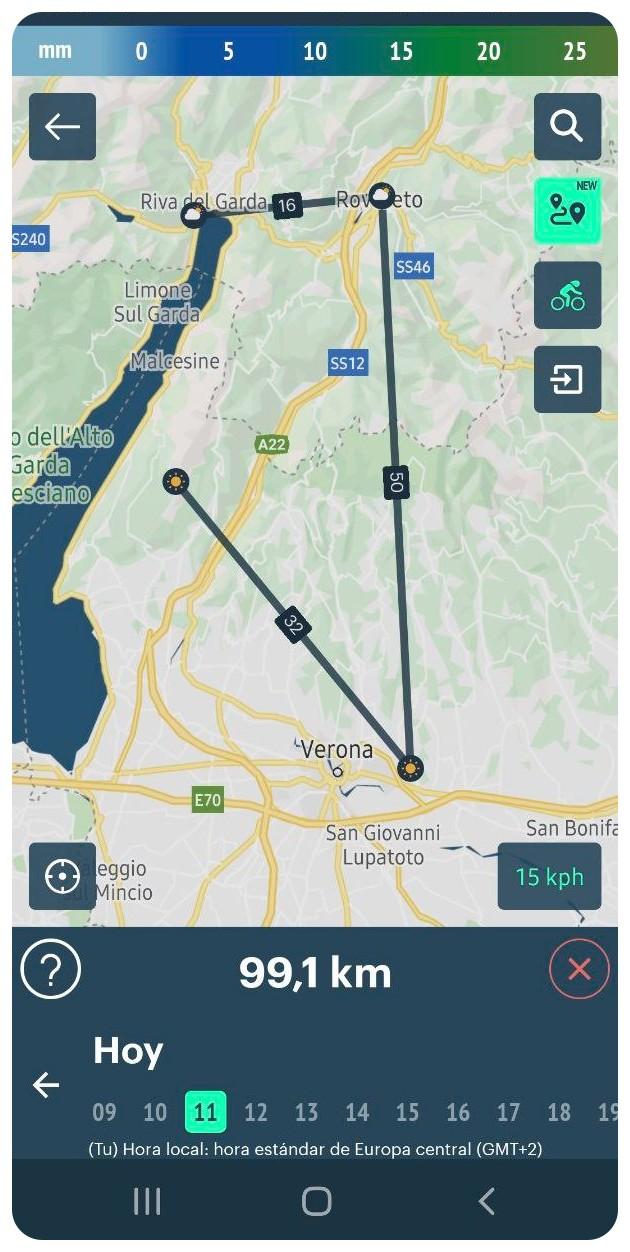
Cycling Routes With Weather in the Windy.app for Android
4. Finally, if you tap on the weather icon (a small sun), you will see the weather information.
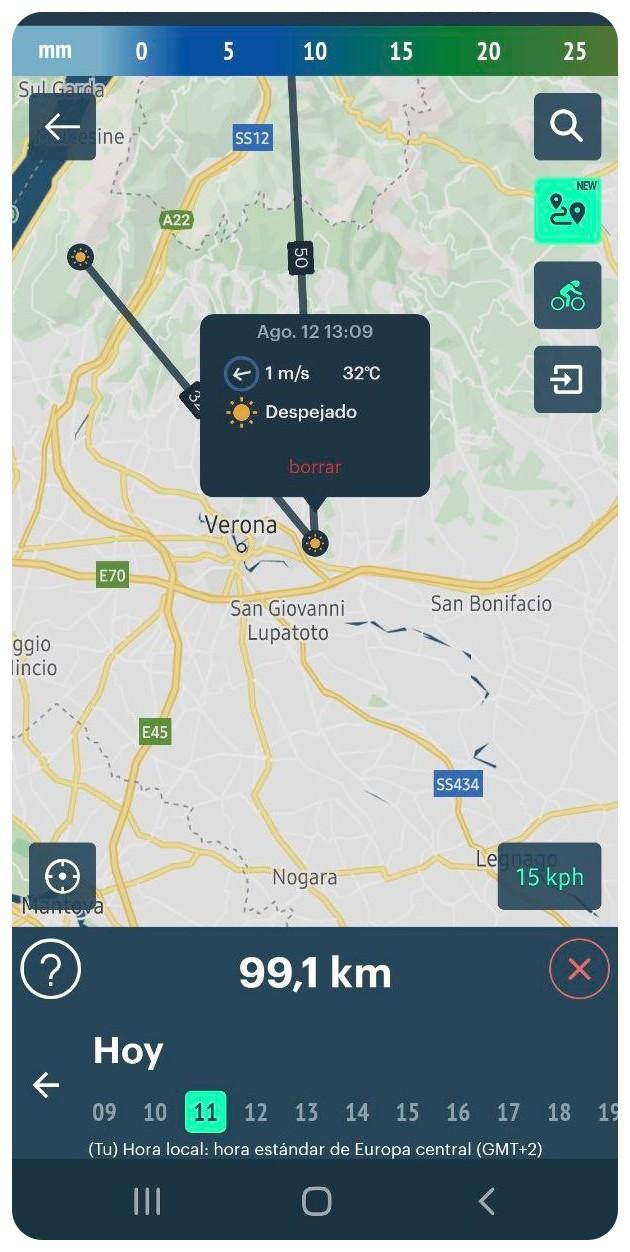
Cycling Routes With Weather in the Windy.app for Android
5. You can also click on that weather information to see the forecast for that location.
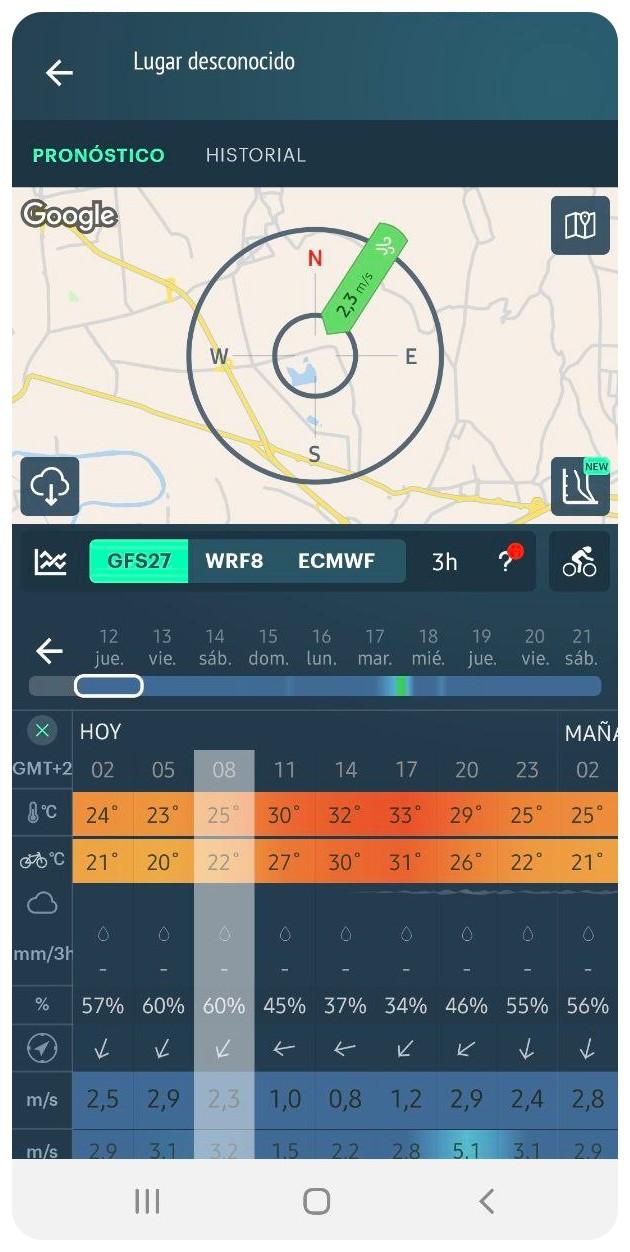
Cycling Routes With Weather in the Windy.app for Android
Text: Diana Marcela Zuluaga. Ivan Kuznetsov contributed to this article
Cover photo: Quino-al / Unsplash
You will also find useful
Hiking and Biking Routes With Weather — a brand new feature
Tip: How to make biking and hiking route with weather in Windy.app
Latest News
Professional Weather App
Get a detailed online 10 day weather forecast, live worldwide wind map and local weather reports from the most accurate weather models.
Compare spot conditions, ask locals in the app chat, discover meteo lessons, and share your experience in our Windy.app Community.
Be sure with Windy.app.



